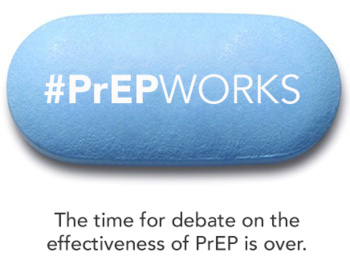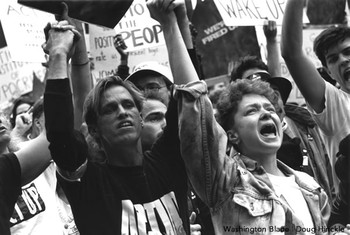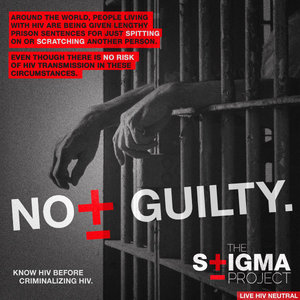Meet Cassandro, Mexico’s Lucha Libre Drag Queen Superstar
![]()
 “People know,” Mexican wrestler Cassandro tells The Guardian. “They know Cassandro, at least. They know Cassandro is not somebody to play around with. They know if they pay for a ticket, they’re gonna see Cassandro work his ass.”
“People know,” Mexican wrestler Cassandro tells The Guardian. “They know Cassandro, at least. They know Cassandro is not somebody to play around with. They know if they pay for a ticket, they’re gonna see Cassandro work his ass.”
At 5’5 and 44 years old, Cassandro, who is named after an infamous Tijuana brothel-keeper named Cassandra, has been professionally wrestling for the past 26 years and is somewhat of a celebrity in Mexico’s lucha libre culture.
He identifies as an “exotico,” which is a type of luchador that first appeared in Mexican wrestling in the 1940s. Luchadors are divided into two categories: “tecnicos” (good guys) and “rudos” (bad guys). Exoticos are effeminate men who fight in drag and are considered rudos.
“They were rudos because they were like the clowns in the circus,” Cassandro explains. “They were there to make people laugh. They weren’t really gay, unless they were in the closet.”
“We’re not transvestites,” he elaborates, “because I don’t do this out of the ring. I don’t do drag or anything like that. I don’t live as a woman. I’m gay, that’s it.”
In the wrestling ring, exoticos act as comic relief, but also as targets for abuse from the audience, who will yell slurs at them from the stands. This, Cassandro says, is all part of the game.
 “Lucha libre in Mexico is like a religion,” Cassandro says, “and Mexico is a very machista country. Homophobia is everywhere.”
“Lucha libre in Mexico is like a religion,” Cassandro says, “and Mexico is a very machista country. Homophobia is everywhere.”
He explains that wrestling matches serve as a way for the working poor to let off steam.
“It’s like a free therapy session for them,” he says. “They will go and scream their lungs out, and all the anger about what’s been done to them during the week, they get it out on the exoticos.”
If having antigay slurs hurled at him on a regular basis upsets him, it doesn’t show.
“Yeah, we are gay,” he says, “but we do know how to wrestle.”
Cassandro was actually born Saul Armendariz in El Paso, Texas, just across the border from Ciudad Juarez, Mexico. Growing up, he spent much of his time on the Mexican side of the river attending lucha libre matches. At 15, he dropped out of school to apprentice with a lucha libre trainer in Juarez. 26 years later, he’s still at it. Though the physical toll it’s taken on his body is noticeable.
“I just bought my teeth for the third time,” he says. “I’ve had four surgeries. I just had the last one 12 weeks ago on my knee, to remove a plate with eight pins.”
Cassandro has also suffered torn ligaments in both knees, a shin fracture, and five dislocated shoulders. In addition to that, he’s struggled on and off with depression and addiction throughout his life, though he’s been sober since 2003.
 “Wrestling has been the worst thing that ever happened to me,” he confesses, “because I had to discover first who I was not, and that I discovered in wrestling, through the drugs, the alcohol, the sex, the craziness back stage — just to be hard enough, just to prove to people that you deserve to be a wrestler.”
“Wrestling has been the worst thing that ever happened to me,” he confesses, “because I had to discover first who I was not, and that I discovered in wrestling, through the drugs, the alcohol, the sex, the craziness back stage — just to be hard enough, just to prove to people that you deserve to be a wrestler.”
He blames much of his troubles on his his alter ego, Cassandro.
“That ego is not my amigo,” he says. “Because, you know, Cassandro is the one who is trying to kill me. And Saul is now the one who’s in charge and is trying to heal Cassandro: ‘You can be Cassandro, but leave that arrogance, that egotistic behavior, leave all that drama to the side.’ I have to find the balance between the two.”
But despite everything, Cassandro says he doesn’t plan on quitting anytime soon.
“If I would stop,” he says, “if I wouldn’t train, I would become a bitter motherfucker.”
Related stories:
A Close Look at Mexico City’s Naked Man Exhibition
10 Reasons To Be Happy Wrestling Is Back In The Olympics
Harassment, Abuse, And Extortion: The Everyday Struggles Of Gay Mexicans Revealed
Graham Gremore is a columnist and contributor for Queerty and Life of the Law. Follow him on Facebook and Twitter.
Graham Gremore


 You’d better not pout, you’d better not cry, and if you happen to be a mall Santa, you’d definitely better not be gay.
You’d better not pout, you’d better not cry, and if you happen to be a mall Santa, you’d definitely better not be gay.





